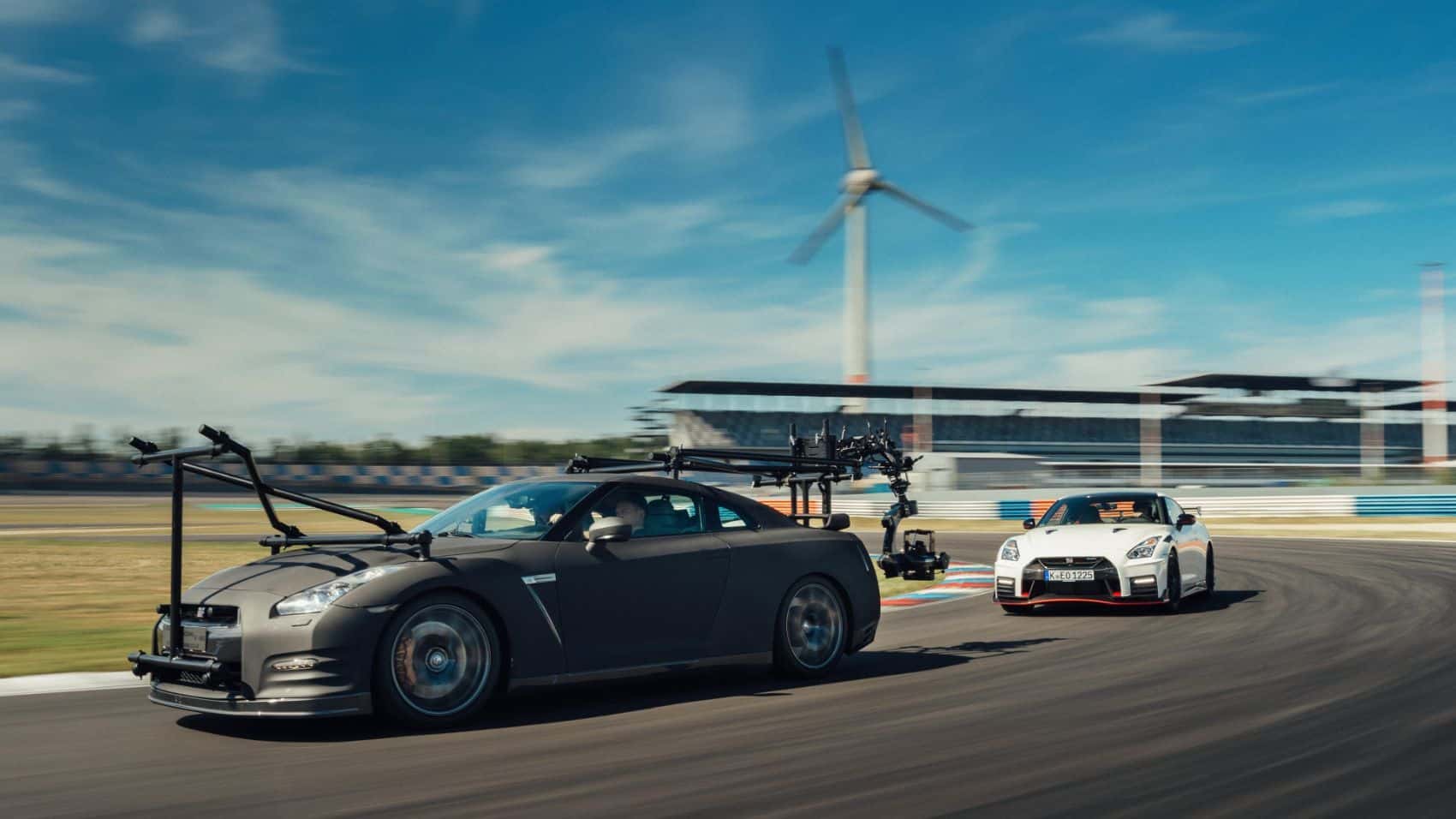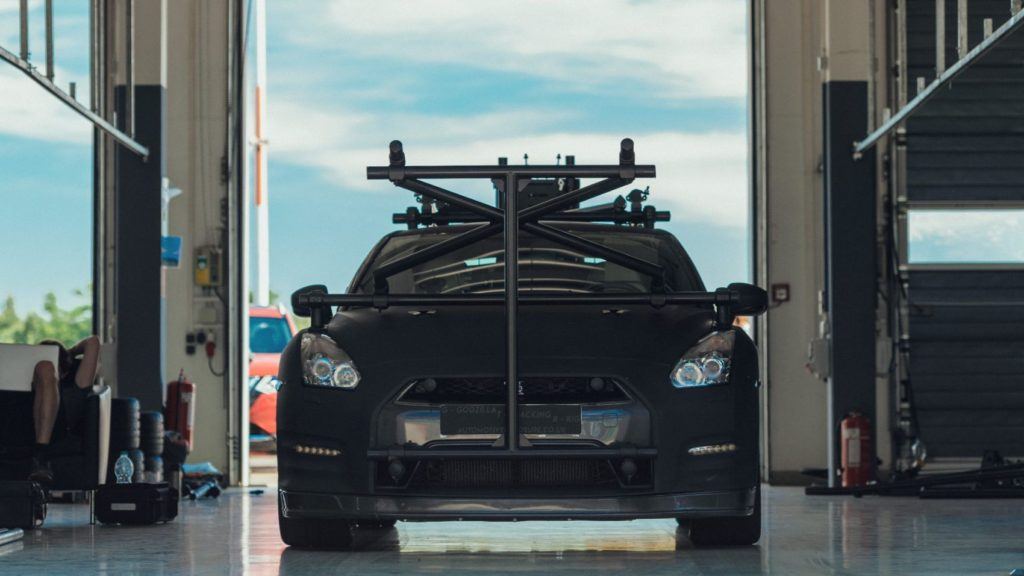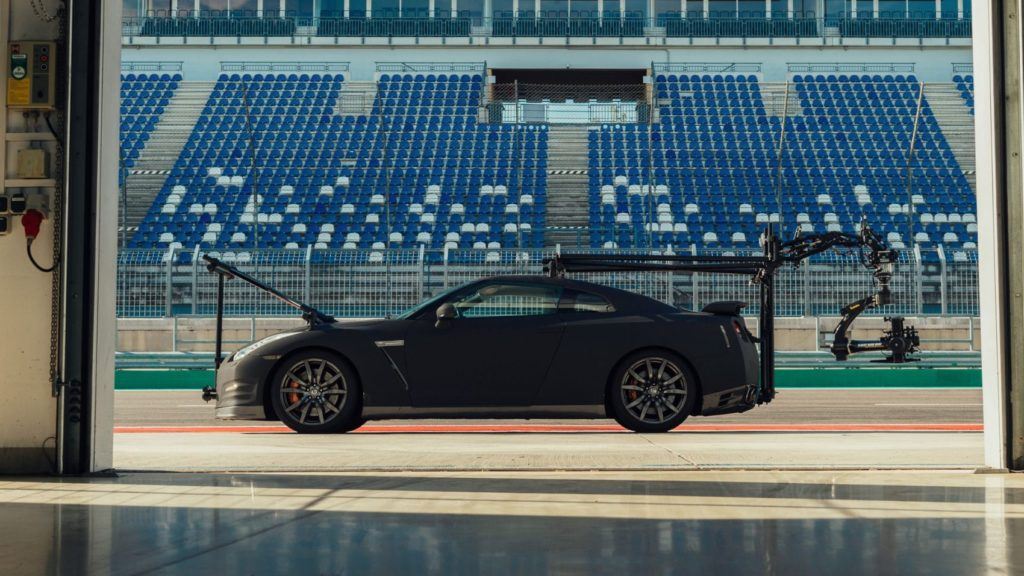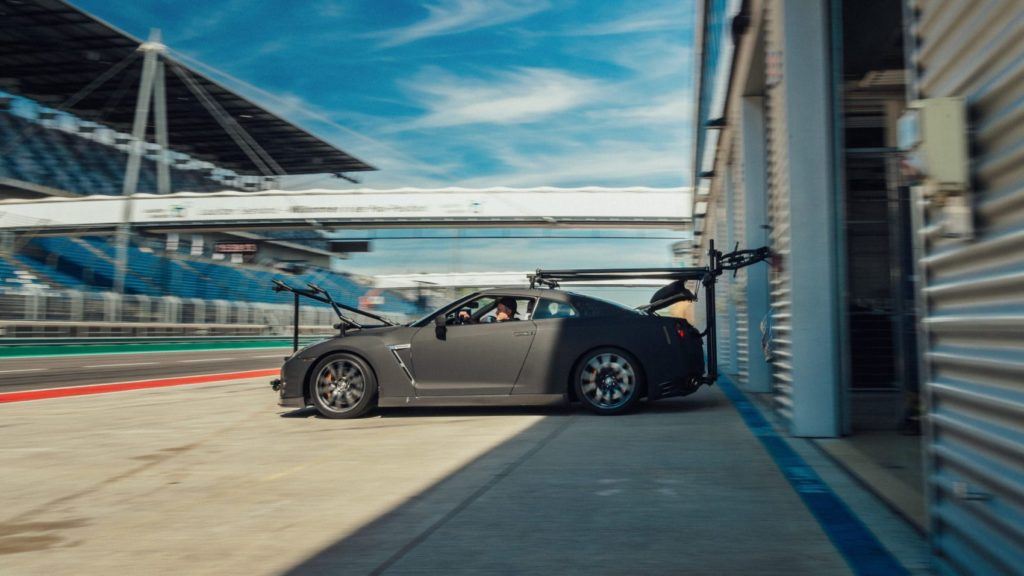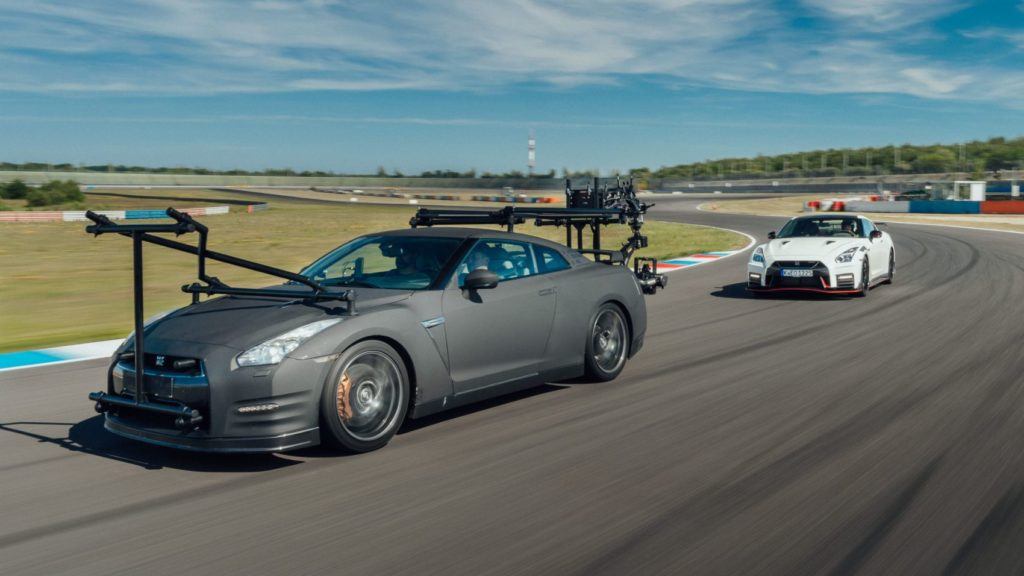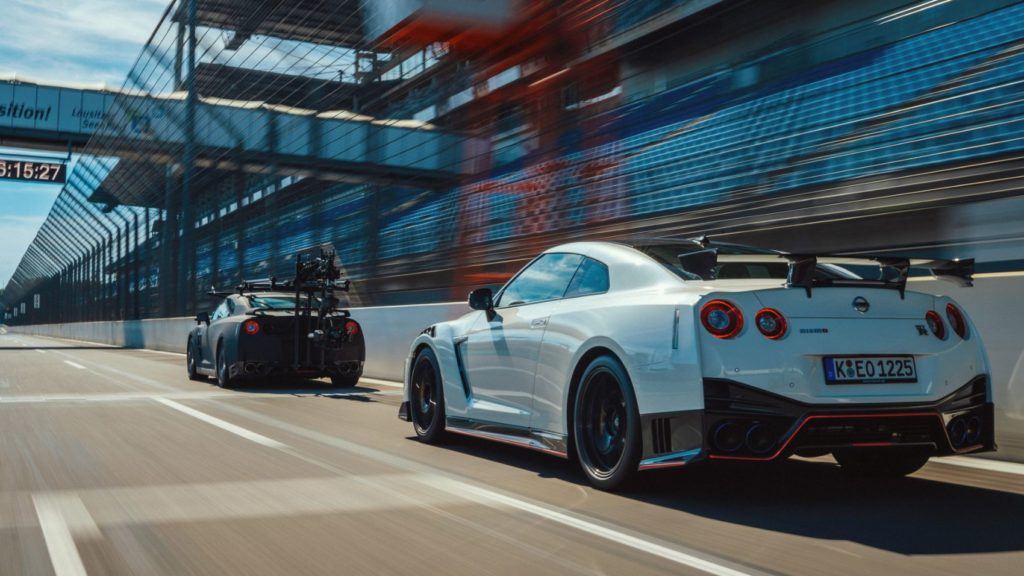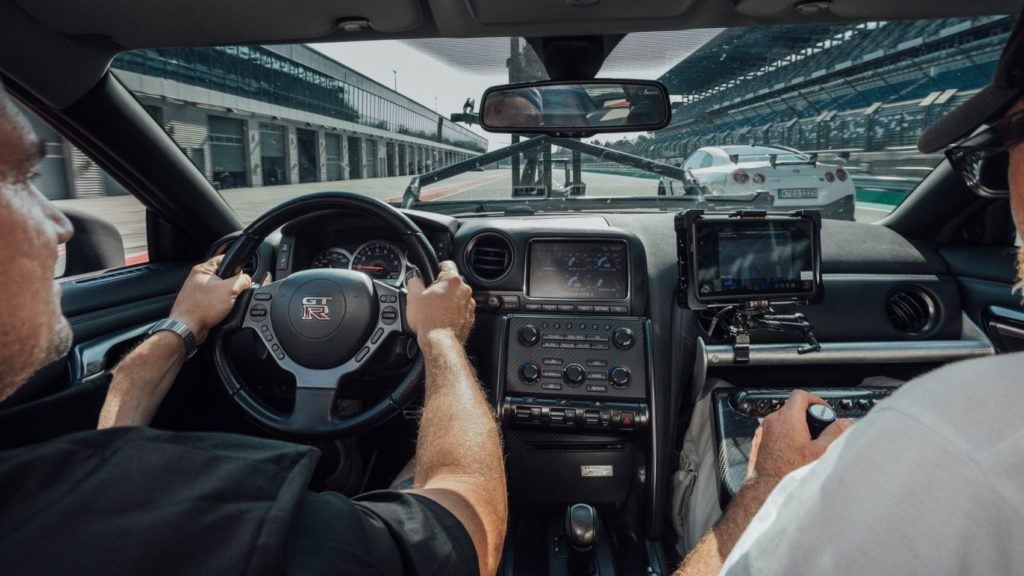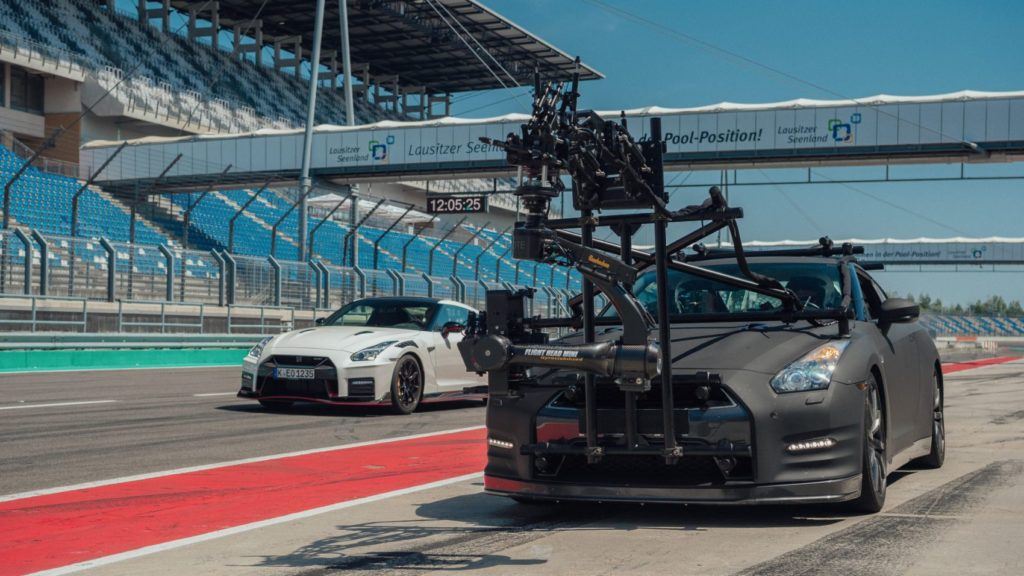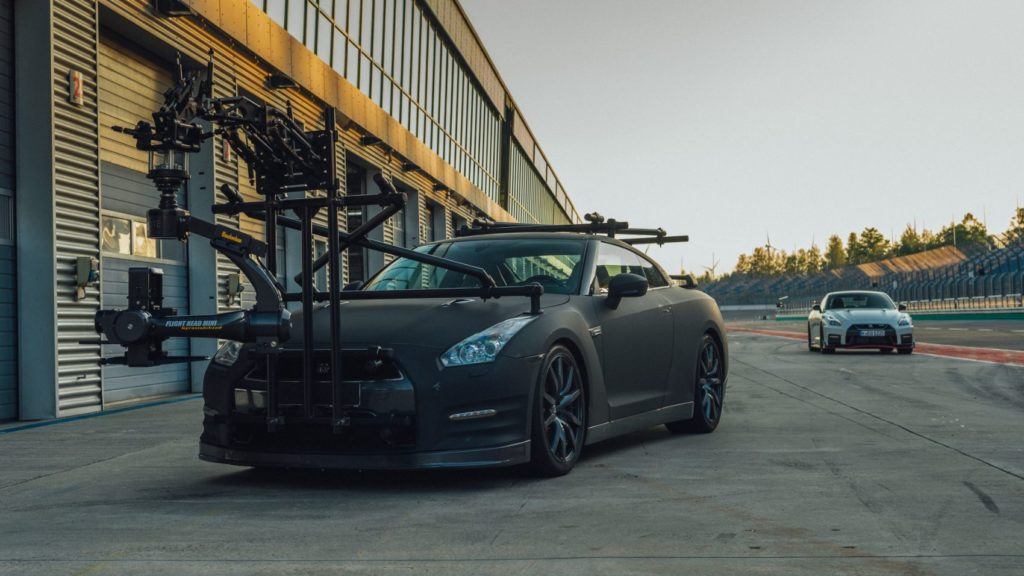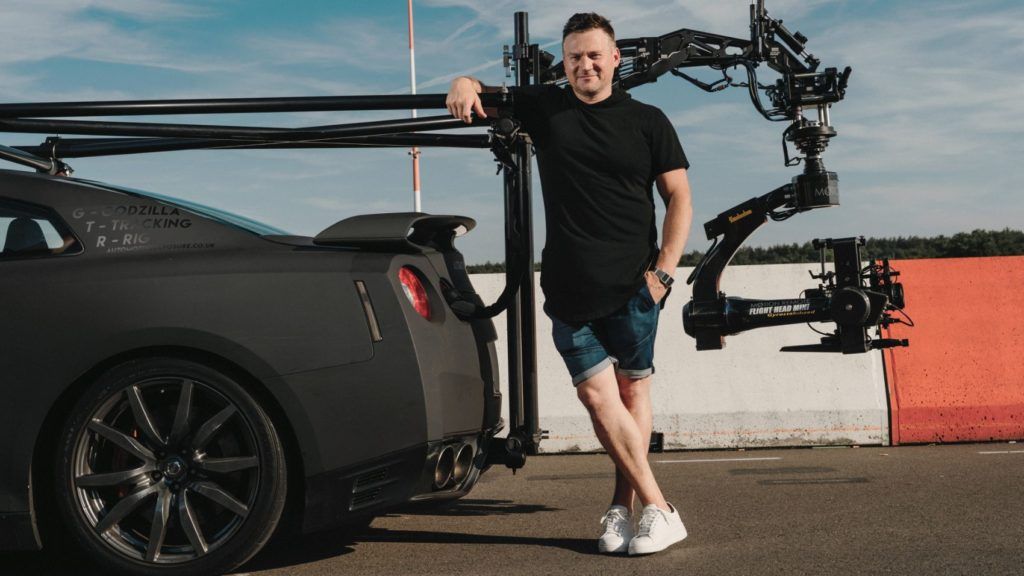- The Nissan GT-R NISMO is the king of the hill for the Japanese brand.
- Given its performance and precision, it’s hard to capture it on camera.
- When it comes to filming Godzilla, only another Godzilla can keep up.
The 2020 Nissan GT-R NISMO is the summit of the storied car from Japan. The engine has been upgraded, its aerodynamics tweaked, and weight shaved by using exotic materials (hurray!). But how do you film it for commercials? Turns out the best way to film a 2020 GT-R NISMO is with another GT-R.
Awhile back, I wrote about the Ford Edge camera car and its technical specs. Well, this is like that, only much less boxy and much, much faster. I’m not sure I fully agree with Nissan’s contention that “only another GT-R can keep up with a GT-R” but let’s go with it.
The Perfect Platform
There’s this guy, Mauro Calo, and he’s a pro driver and automotive video expert known for working on big-budget blockbuster movies and automotive TV shows. And Mauro thought using a GT-R as a camera platform made perfect sense. So did Nissan. The company helped him find a “suitable” GT-R (I’m guessing lightly wrecked), from which Calo and his team fitted a custom tubular affair to the chassis. This scaffolding’s whole job was to hold the carbon-fiber gimbal mounting system which could fit a number of different cameras.
“When I started to think about developing a high-performance camera car, I quickly realized that the Nissan GT-R was the only car that would meet my criteria,” Calo explained. “It has supercar performance, with outstanding all-wheel drive handling and stability. It’s famously reliable, and it can seat the team I need to operate the camera system.”

Getting To Work
The GT-R, with its low center of gravity, adjustable suspension, and four-seater configuration is a good base car for accommodating camera rigs. Yeah, sure, that “seats four” is kind of notional, but I bet those two back “seats” will be occupied by grips or PAs or somebody low down on the production totem pole, so who cares if they’re cramped.
- Related: Inside the Brembo braking system on the Nissan GT-R NISMO.
So Calo takes his GT-R camera platform over to the Lausitzring racetrack in Brandenburg, Germany, and after some planning and choreography and coordination via walkie-talkie, the two GT-Rs chased each other around the track. They recorded the sweet footage below. Good job Mauro!
2020 Nissan GT-R: 50 Years of Racing
The 2020 Nissan GT-R seems to be worth all the fuss. Basically there are three trim levels: GT-R Premium, GT-R Track Edition, and GT-R NISMO. But there’s actually a fourth trim, the 50th Anniversary Edition that’s based on the GT-R Premium.
For a start, the 50th Anniversary Edition comes in three heritage-era, two-tone exterior color combos: Bayside (Wangan) Blue with white racing stripes, Pearl White with red stripes, and Super Silver with white stripes.
Inside the 50th Anniversary Edition you’ll find a special gray color scheme to give the cabin a sense of luxury. Other 50th anniversary features include a unique steering wheel and shift knob, special embossed seats, an Alcantara headliner with unique stitching, and Alcantara-wrapped sun visors.
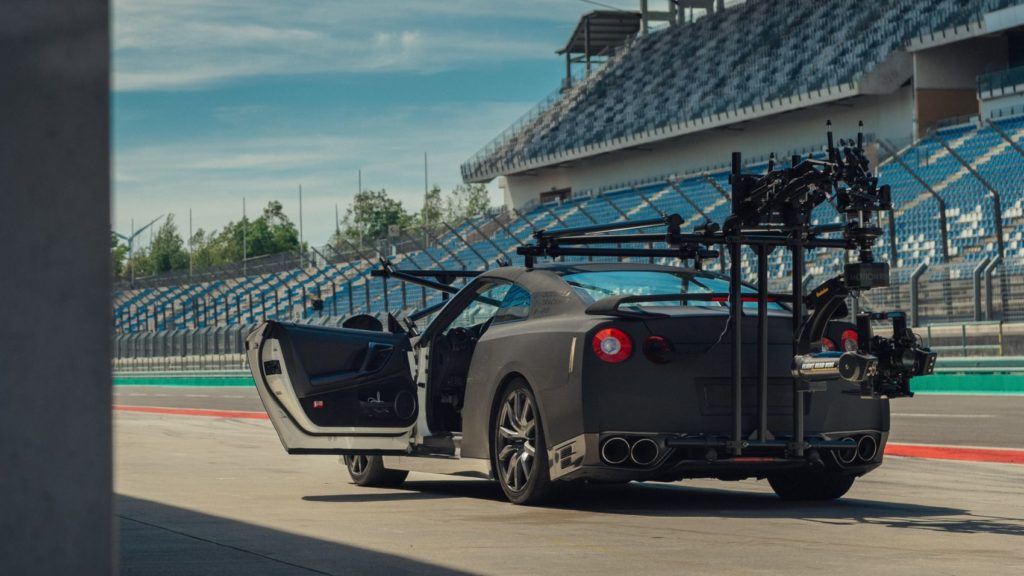
GT-R 50th Anniversary Edition: Under The Hood
The engine, although extensively reworked, is still the same 565-horsepower 3.8-liter V6 found in “normal” GT-Rs. The 24-valve, twin-turbocharged plant creates 467 lb-ft. of torque, and is still connected to the same all-wheel drive system and six-speed semi-auto gearbox. The exterior has also been subtly tweaked, but only the GT-R cognoscenti will most likely notice (like you really wanted to impress civilians in the shopping mall parking lot anyway).
“The Nissan GT-R has been the icon of our company’s driving performance for the past half century,” explained Shinichiro Irie, GT-R Program Design Director. “While the exterior and interior changes may seem subtle at first glance, they’re still impactful, especially with the new paint schemes, keeping the car’s lines and overall presence modern and edgy.”
So, you know, just the same ol’, same ol’ GT-R that people still justifiably refer to as Godzilla, and I don’t see Nissan changing that part of the equation anytime soon.
Tony Borroz has spent his entire life racing antique and sports cars. He is the author of Bricks & Bones: The Endearing Legacy and Nitty-Gritty Phenomenon of The Indy 500, available in paperback or Kindle format. Follow his work on Twitter: @TonyBorroz.
Nissan GT-R Camera Car Gallery
Photos & Source: Nissan North America.

